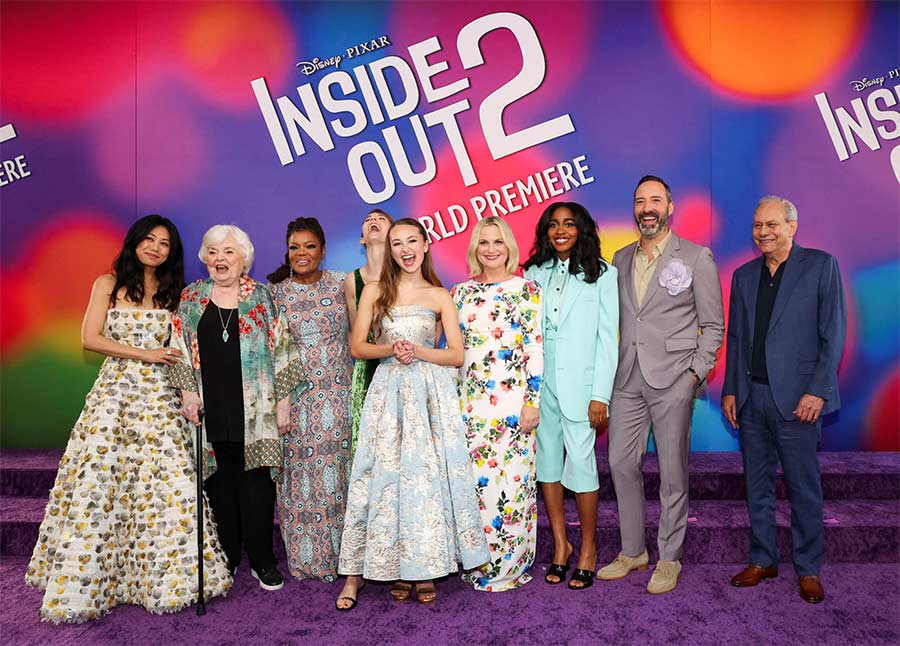‘It is our hope that the standards set by our National Artists in the MMFF will continue to inspire our filmmakers to produce masterpieces that will again become part of the Philippine film canon.’
Preparations are underway for the much-anticipated 50th edition of the biggest, most popular and widely supported Metro Manila Film Festival (MMFF).
From the 39 scripts submitted, the esteemed members of the Selection Committee will chose the first four official entries based on the following criteria: Artistic Excellence – 40%, Commercial Appeal – 40%, Filipino Cultural Values – 10% and Global Appeal – 10%. The other four will come from the finished films submission with a September 30 deadline.
The Selection Committee aims to ensure a good mix of entries every year, featuring films of different genres evaluated on a standard that balances film excellence and commercial viability. True to its objectives, the MMFF is here : 1) to help in the promotion and development of the local film industry and 2) to raise revenues for its designated beneficiaries from the local movie industry.
As the Order of National Artist nomination is due by the end of this month, it is significant to note that the seven National Artists for Film and Broadcast Arts have all been active participants and awardees in the MMFF. These artists include Eddie Romero, Fernando Poe Jr., Lino Brocka, Ishmael Bernal. Ricky Lee, Marilou Diaz Abaya, and Nora Aunor.
We’ve surveyed 30 university students and here are their Top 10 MMFF films from our revered National Artists:
1. “Himala” (1982) (Nora Aunor, Ricky Lee, Ishmael Bernal). Hailed as CNN Asia Pacific Screen Awards Viewers Choice Best Film Awardee, “Himala” is the story of Elsa, who reveals her visions of the Virgin Mary in a quiet, nondescript town. As she starts healing people, Cupang is instantly transformed into a bustling community attracting sick and helpless individuals, pilgrims, and tourists.
2. “Ganito Kami Noon, Paano Kayo Ngayon” (1976) (Eddie Romero). This film narrates the adventures and misadventures of Kulas during the Philippine Revolution of 1896-98 and the Philippine-American War of 1899-1901, leading him to a realization about his identity as a man and a Filipino.

3. “Ang Panday” (1980, 1981, 1982 and 1983) (Fernando Poe, Jr.) . A fantasy film featuring Flavio, the Filipino epic hero, a blacksmith who creates a powerful sword from a mysterious metallic object to battle the evil Lizardo. The film’s success led to several sequels, an animated TV series, and a remake by Ramon “Bong” Revilla Jr.
4. “Jose Rizal” (1998) (Ricky Lee, Marilou Diaz-Abaya). Depicting the life and struggles of national hero Jose Rizal through non-linear flashbacks, this film was shown in various international film festivals like Chicago, Berlin and the Asian American International Film Festival in New York City. A restored version is ready for public viewing this year.
5. “Bona” (1980) (Lino Brocka, Nora Aunor). This film tells the story of Bona, an avid fan of a movie bit player, Gardo. Her father beats her up and she runs away from home only to serve Gardo hand and foot. When her father dies, she is confronted by her enraged brother; and after a prolonged absence, Gardo comes back and tells Bona of his plans to quit show business and live abroad with his new girlfriend Katrina. Bona responds by scalding Gardo in the film’s violent climax scene. The restored version premiered at the Cannes Film Festival.
6. “Ina Ka ng Anak Mo” (1979) (Lino Brocka, Nora Aunor). A story about a couple’s tumultuous relationship, complicated by the husband’s affair with his mother-in-law, resulting in a child. Daughter brings the matter to court and cries “Hayup! Hayup!”

7. “Insiang” (1976) (Lino Brocka). The film follows the story of Insiang, the only child of Tonya, a market vendor abandoned by her husband. Mother and daughter live in a shanty with the parasitic relatives of Tonya’s husband.
When the relatives leave, Tonya takes in a hoodlum, Dado, who is attracted to Insiang.
Dado rapes Insiang but Insiang is not believed by Tonya. With revenge in mind, Insiang reveals her relationship with Dado, leading Tonya to murder him. In the end, Insiang visits Tonya in prison and asks for forgiveness but receives only Tonya’s bitter indifference. Insiang leaves without looking back at Tonya, who peers out of the barred window of her cell, face full of hate, anger and pain.
8. “Brutal” (1980) (Ricky Lee, Marilou Diaz-Abaya). This film explores the story of Monica, accused of a grisly triple murder. Through the investigation, it is revealed that she was a victim of male violence, leading to a dramatic and tragic resolution.
9. “Moral” (1982) (Ricky Lee, Marilou Diaz-Abaya). The film traces the lives of four women, against the backdrop of the social, political, and economic milieu of the late 1970s to early 1980s. The Filipino woman is shown not as a victim but a shaper of her own destiny.

10. “Muro Ami” (1999) (Ricky Lee, Marilou Diaz-Abaya). “Muro Ami” is a Filipino adventure drama film about Fredo, a ruthless captain of 150 muro ami divers who employ illegal fishing practices. It depicts the plight of child labor in illegal fishing practice.
All these films are cited as classics in the Encyclopedia of Philippine Art. And there are more noteworthy MMFF films from our Pambansang Alagad ng Sining, including “Atsay,” “Bulakak ng City Jail,” “Ano ang Kulay ng Mukha ng Diyos,” “Minsa’y Isang Gamu-Gamo,” “Haplos,” “Karnal,” “Olongapo, The Great American Dream,” “Pacita M,” “Muling Umawit ang Puso,” “Andrea, Paano Ba ang Maging Isang Ina.” It is our hope that the standards set by our National Artists in the MMFF will continue to inspire our filmmakers to produce masterpieces that will again become part of the Philippine film canon





